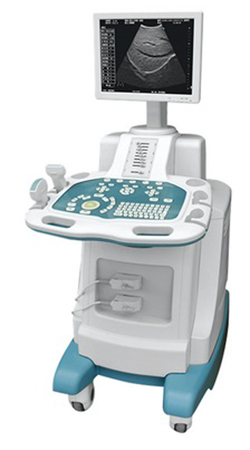Sonography, a cornerstone of modern medical imaging, has revolutionized diagnostics by offering a non-invasive way to visualize internal organs and tissues. With its growing popularity, people often have questions about its purpose, safety, and applications. This blog addresses the top questions about sonography sourced from Quora, helping you understand this vital medical tool better.
1. What is Sonography and How Does It Work?
Sonography, or ultrasound imaging, uses high-frequency sound waves to create detailed images of organs, tissues, and blood flow. Unlike X-rays, it involves no ionizing radiation, making it safer for patients. According to the Radiological Society of North America, over 100 million ultrasound procedures are performed annually worldwide.
💡 Quick Fact: The first medical ultrasound machine was developed in the 1950s, inspired by sonar technology used during WWII.
2. What Are the Different Types of Sonography?
Sonography isn’t a one-size-fits-all technique. Depending on the application, there are several types:
- Abdominal Sonography: Examines organs like the liver, kidneys, and pancreas.
- Obstetric Sonography: Monitors fetal development during pregnancy.
- Cardiac Sonography (Echocardiography): Assesses heart structure and function.
- Musculoskeletal Sonography: Visualizes muscles, tendons, and joints.
📊 Statistic: A 2023 report from the American Institute of Ultrasound in Medicine highlights that 65% of ultrasound procedures are abdominal or obstetric.
3. What Conditions Can Be Diagnosed with Sonography?
Sonography’s diagnostic range is vast. Common uses include:
- Detecting gallstones or kidney stones.
- Evaluating abnormal heart rhythms.
- Diagnosing soft tissue injuries like muscle tears.
- Monitoring pregnancies to ensure fetal health.
Case Study: A 2022 study in The Lancet found that point-of-care ultrasound (POCUS) increased diagnostic accuracy by 30% in emergency settings.
See also: Understanding 3D Color Ultrasound: Benefits and Applications
4. Is Sonography Safe?
Safety is a common concern, especially for pregnant women. The World Health Organization confirms that ultrasound imaging is safe when used appropriately. Unlike CT scans, sonography emits no radiation, making it a preferred choice for monitoring pregnancy and soft tissues.
💬 Expert Insight: Dr. Emily Collins, a radiologist, says:
"Ultrasound is one of the safest diagnostic tools, with minimal risks even for prolonged use in specific medical contexts."
5. How Should I Prepare for a Sonography Exam?
Preparation varies by exam type. Here’s a handy guide:
- Abdominal Ultrasound: Fast for 8 hours to reduce gas interference.
- Pelvic Ultrasound: Drink water beforehand for a full bladder.
- Cardiac Ultrasound: No specific preparation is usually required.
📌 Tip: Always follow your physician’s instructions to ensure accurate results.
Have questions? We offer free consultation.
6. What Should I Expect During a Sonography Procedure?
Sonography is typically quick, painless, and stress-free. Here’s what happens:
- You’ll lie down on an examination table.
- A gel is applied to your skin to improve sound wave transmission.
- The sonographer moves a handheld device, the transducer, over the area.
⏱️ Duration: Most scans last between 15 to 45 minutes.
7. How Do I Interpret My Sonography Results?
While the images may seem like abstract art to the untrained eye, radiologists and doctors are experts at deciphering them. Results typically include:
- Grayscale Images: Show structural abnormalities.
- Doppler Studies: Highlight blood flow patterns.
📚 Example: A pulsating color pattern in Doppler imaging could indicate a blood vessel blockage.
8. What Are the Limitations of Sonography?
Though versatile, sonography has its limits:
- It struggles to penetrate bone or areas with excessive gas.
- Image quality may depend on the operator's skill and patient body type.
🔍 Study Reference: According to a 2021 review in Medical Imaging Today, sonography accuracy drops by 20-30% in obese patients due to reduced wave penetration.
9. How Can I Become a Sonographer?
Becoming a sonographer involves specialized education and training. Requirements include:
- Completing a two-year associate degree or a four-year bachelor’s degree in sonography.
- Passing certification exams like the ARDMS (American Registry for Diagnostic Medical Sonography).
💼 Career Outlook: The U.S. Bureau of Labor Statistics projects a 14% job growth for sonographers between 2022 and 2032, faster than the average for all occupations.
10. Are There Any Emerging Trends in Sonography?
Sonography is evolving with AI integration and portable devices:
- AI in Ultrasound: Enhances diagnostic accuracy by detecting patterns humans may miss.
- Handheld Ultrasound Devices: Make sonography more accessible in remote areas.
🌟 Example: The Butterfly iQ, a pocket-sized ultrasound, has democratized access to imaging worldwide.
Conclusion
Sonography is a powerful, safe, and versatile diagnostic tool with applications ranging from obstetrics to emergency medicine. Whether you’re a patient or a prospective sonographer, understanding its benefits and limitations is key.
🔗 Call to Action:
Explore more about sonography and related healthcare topics on our blog! For personalized advice, always consult your healthcare provider.
→Click here to learn more about our Ultrasound Scanner
or
